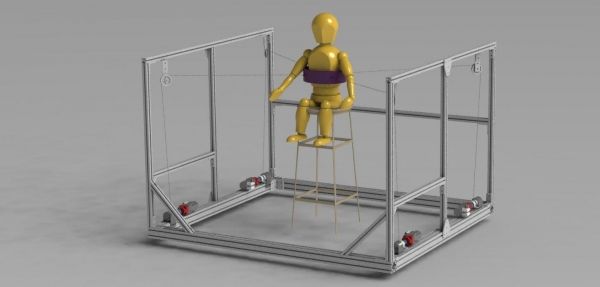Spinal cord injuries (SCI) can cause devastating damage, including loss of mobility and sensation. Every year, there are an estimated 17,000 new SCIs in the US alone, a rate higher than in most regions of the world. In addition, the rate of SCIs in people 65 years or older is expected to rise in the US, from 13% in 2010 to 16.1% by 2020. Data also shows a high survival rate for these patients, who need to function in everyday life but find sitting to be a major challenge.
A Columbia Engineering team has invented a robotic device—the Trunk-Support Trainer (TruST)—that can be used to assist and train people with SCIs to sit more stably by improving their trunk control, and thus gain an expanded active sitting workspace without falling over or using their hands to balance. The study, published today in Spinal Cord Series and Cases, is the first to measure and define the sitting workspace of patients with SCI based on their active trunk control.
“We designed TruST for people with SCIs who are typically wheelchair users,” says Sunil Agrawal, the project’s PI and professor of mechanical engineering and of rehabilitation and regenerative medicine. “We found that TruST not only prevents patients from falling, but also maximizes trunk movements beyond patients’ postural control, or balance limits.”
TruST is a motorized-cable driven belt placed on the user’s torso to determine the postural control limits and sitting workspace area in people with SCI. It delivers forces on the torso when the user performs upper body movements beyond the postural stability limits while sitting.
Read more at Columbia University School of Engineering and Applied Science
Image: Illustration showing the architecture of TruST, a robotic device invented by Columbia engineers that retrains patients with spinal cord injury to sit more stably and gain an expanded active sitting workspace. (Credit: Sunil Agrawal and Victor Santamaria/Columbia Engineering)


